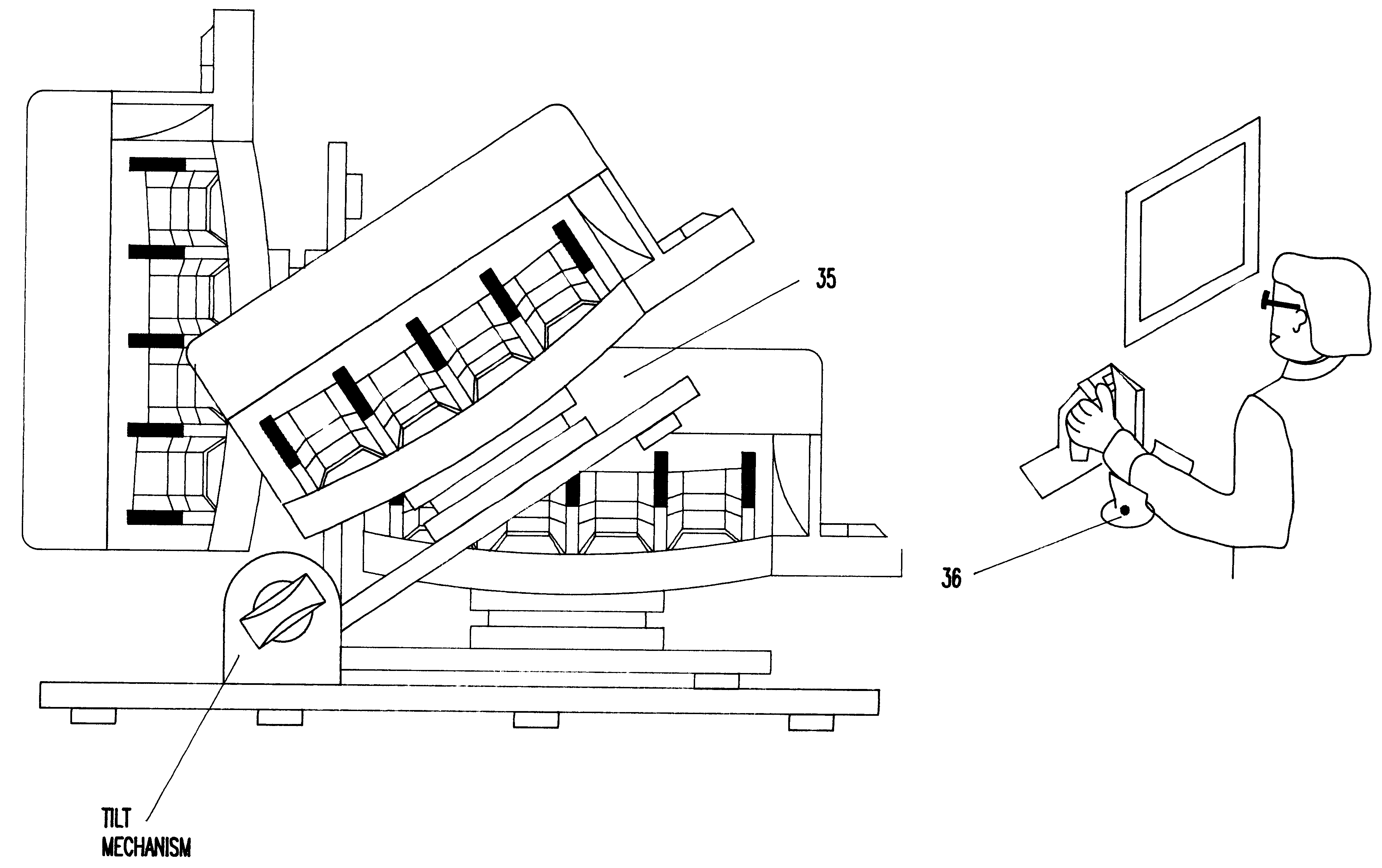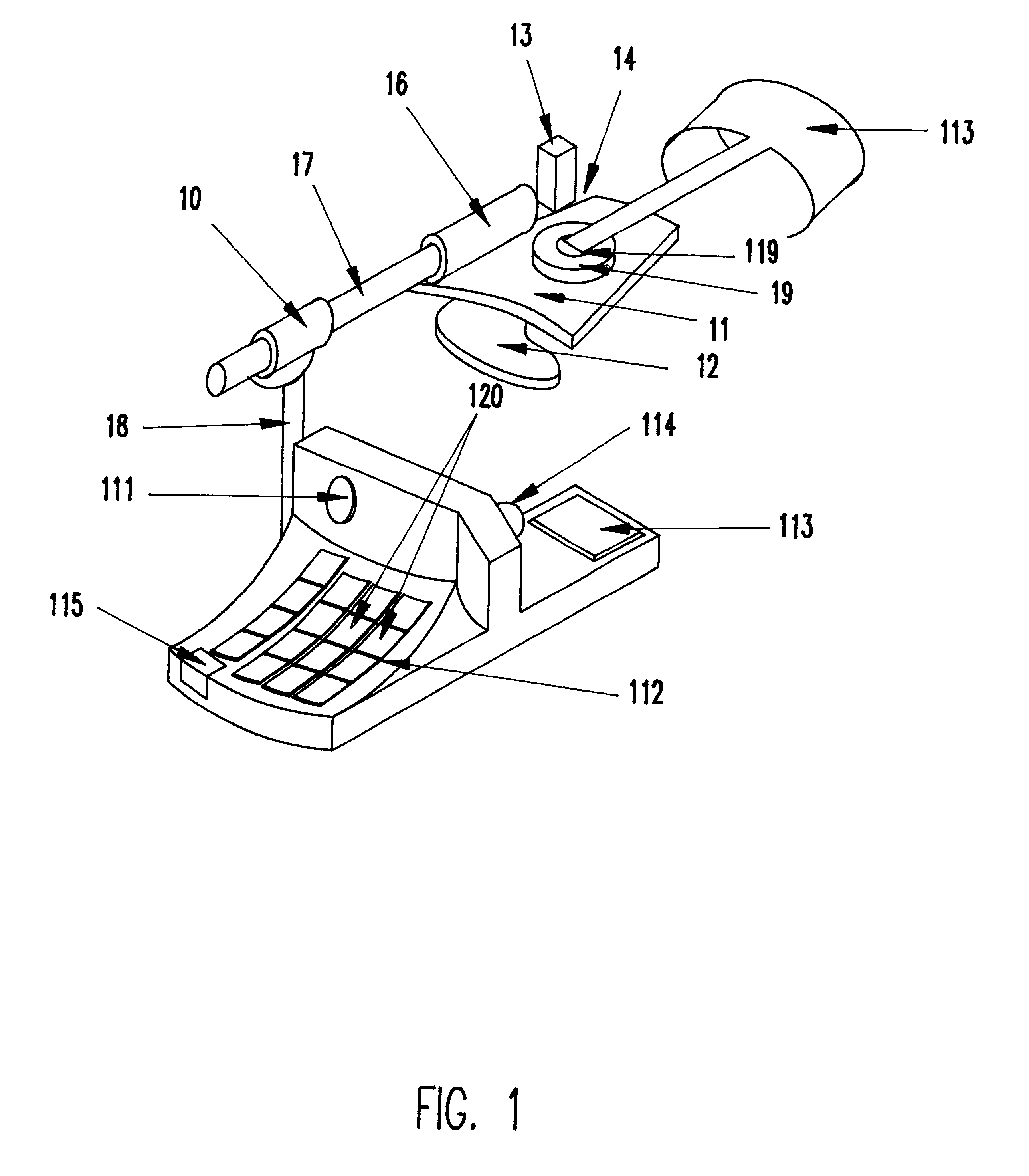Gesture sensing split keyboard and approach for capturing keystrokes
a split keyboard and gesture sensing technology, applied in the field of split keyboards, can solve the problems of design and methods for capturing keystrokes, muscle fatigue, discomfort, pain,
- Summary
- Abstract
- Description
- Claims
- Application Information
AI Technical Summary
Problems solved by technology
Method used
Image
Examples
first embodiment
Finally, the keyboard may be tethered or cabled to the computer as in the embodiment shown in FIG. 3 or it may use an infrared transceiver 115, as in the FIG. 3B shows how the tilted keyboard is used with a wrist and arm support 36.
Belt-mounted, Unattached Version
second embodiment
This embodiment is the same as the second embodiment, except that rather than being desktop mounted, it is actually mounted on the user's belt, as shown in FIGS. 4, 4A and 5. In this version, the back side of the tilting swivel-base mount 42 has belt hooks 41. The right and left hand keyboards may be individually mounted on the user's sides at an angle which is natural for the user, similar in position to pants pocket openings. In this configuration, the user has complete use of his or her hands at all times. Furthermore, the user is able to reach down at any time and type information. This would be especially useful for wearable computer configurations.
Flat Laptop Version with Arced Motion
This embodiment, shown in FIGS. 6, 7A and 7B, is intended to compete with traditional laptop keyboards. Its advantages are that it provides full-sized keys and full range of motion, but it stows in a space that is 8 to 9 keys wide.
As shown in FIG. 6, the contoured keyboard has-been abandoned in fa...
PUM
 Login to View More
Login to View More Abstract
Description
Claims
Application Information
 Login to View More
Login to View More - R&D
- Intellectual Property
- Life Sciences
- Materials
- Tech Scout
- Unparalleled Data Quality
- Higher Quality Content
- 60% Fewer Hallucinations
Browse by: Latest US Patents, China's latest patents, Technical Efficacy Thesaurus, Application Domain, Technology Topic, Popular Technical Reports.
© 2025 PatSnap. All rights reserved.Legal|Privacy policy|Modern Slavery Act Transparency Statement|Sitemap|About US| Contact US: help@patsnap.com



